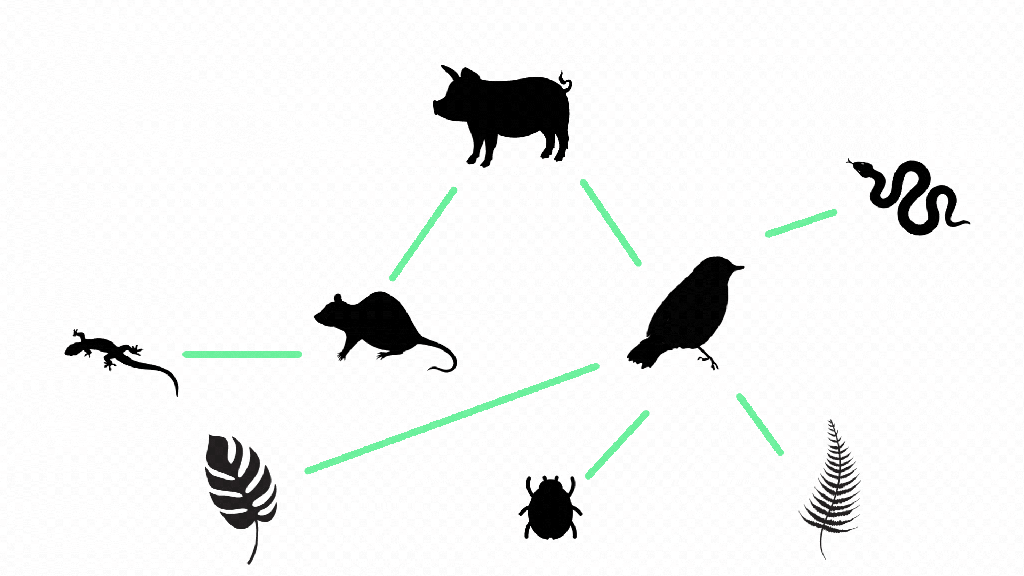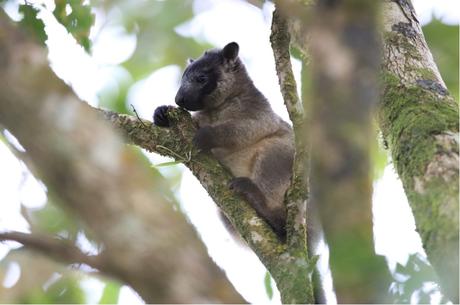Have you ever watched a nature documentary and marvelled at the intricate dance of life unfolding on screen? From the smallest insect to the largest predator, every creature plays a role in the grand performance of our planet’s biosphere. But what happens when one of these performers disappears?
In this post, we delve into our recent article Estimating co-extinction risks in terrestrial ecosystems just published in Global Change Biology, in which we discuss the cascading effects of species loss and the risks of ‘co-extinction’.
But what does ‘co-extinction’ really mean?
Imagine an ecosystem as a giant web of interconnected species. Each thread represents a relationship between two species — for example, a bird that eats a certain type of insect, or a plant that relies on a specific species of bee for pollination. Now, what happens if one of these species in the pair disappears? The thread breaks and the remaining species loses an interaction. This could potentially lead to its co-extinction, which is essentially the domino effect of multiple species losses in an ecosystem.
A famous example of this effect can be seen with the invasion of the cane toad (Rhinella marina) across mainland Australia, which have caused trophic cascades and species compositional changes in these communities.

Quantifying the risks of extinction is essential for effective conservation and the sustainable management of our natural environments. Unfortunately, research in this discipline has likely underestimated co-extinction risks, particularly in terrestrial ecosystems.
One major issue is the oversimplification of species relationships, where we often do not consider the intricate web of connections between organisms. This simplification overlooks the indirect effects and cascading impacts that processes like climate change can have on entire ecosystems.
Additionally, our ability to predict the consequences of species loss is hindered by incomplete data and only suspected relationships. These challenges have made it difficult to grasp the interconnected nature of species and identify those most vulnerable to co-extinction processes.
To address these complex challenges, we proposed a novel framework to improve the identification of co-extinction risks in terrestrial ecosystems and provide better estimates of community-level responses to environmental changes.
We emphasize the importance of capturing the intricacies of species interactions and the dynamic nature of ecosystems by using methods such as computer modelling to represent and evaluate ecological communities. By doing so, we highlight the existing gaps and limitations in our understanding and underscore the need for researchers to consider adaptive responses and other factors in their studies.
By making more realistic models and simulating the impacts of environmental changes, we can gain valuable insights into the potential consequences for entire communities and the associated hidden risks of co-extinction. This community-centric view of evaluating species extinction risk has the potential to assist conservation efforts by identifying species at risk of co-extinction.
For instance, consider the bogong moth (Agrotis infusa), which has had recent attention in the media for its large decline over the last few decades. This insect plays a crucial role in the Australian ecosystem as a primary food source for several predators, one of which is the threatened mountain pygmy possum (Burramys parvus).
The loss of the bogong moth could result in the further decline or even extinction of the possum. Imagine using this framework to target conservation efforts towards preserving the bogong moth and possibly other key species interdependencies, rather than solely focusing on the mountain pygmy possum. This could result in a more effective, long-term solution, by preserving the community in which the possum relies on for survival.

Nevertheless, our review also highlights several important questions that researchers need to tackle to protect our ecosystems.
We need to understand how anthropogenic threats like climate change can affect terrestrial species and how these threats can set off a chain reaction of extinctions, particularly at finer scales of space and time.
There is also a need to explore if advanced technology, like machine learning, can identify the complex relationships between different species across various taxonomic groups, such as between reptiles and mammals, in various biomes, such as in a forest or tundra.
Furthermore, we need to investigate how changing the level of detail included in modelled communities, such as species’ ability to vary and adapt to changes, or the inclusion of comprehensive data on their food resources, might affect how co-extinctions occur in communities. Addressing these challenges is essential to maximise the use of these methods in practical applications.
Through collaboration and a commitment to improvement, we can inform environmental policies and effective management strategies that protect biodiversity from probable future environmental changes.
As our understanding of co-extinction risks evolves, and we develop better tools and frameworks, we can make more informed decisions about conservation and biodiversity management. And as we learn more about these relationships, we can appreciate the role each performer plays in maintaining the dance of life.

